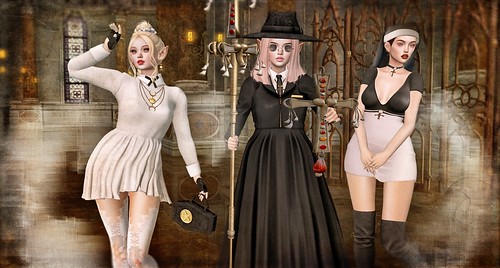4 minutes estimated reading time
Breaking norms to create shock is a well-trodden path. Look at the way the Conservative Party used transgressions to dominate news cycles during the last election. For a cynical marketer like myself it has all become rather jaded.
This news footage of audience reactions from screenings of The Exorcist reminded me of the power in breaking norms.
One film that was famous for breaking norms was The Exorcist. It has a whole mythos built up around it. New Hollywood was pushing the boundaries of what was acceptable across different genres and horror was no exception.
Breaking norms was big business. The Exorcist was the highest grossing R-rated film at the box office until Terminator 2 almost 20 years later.
The Exorcist was released in 1981 in the UK on video tape, but was then banned – swept up in the video nasties media frenzy of 1982 to 1983. It was so controversial that it wasn’t re-released for 25 years after its initial release. That gap allowed the myth to grow.
Watching the reactions in this film above gives you a sense of the power of breaking norms. And this wasn’t just an American phenomenon. Before I went to college, I used to work in an oil refinery.
One of my colleagues was a man in his late fifties called Joe Simpkin. He was shorter than me with a barrel-like body shape, a Cheshire accent (think the nasal twang of Frank Sidebottom).
Always cheerful, Joe was a typical plant worker; he’d seen a lot working in the UK and the Middle East from before the OPEC oil crisis of 1973. He usually told ribald tales, which usually happened during a stopover in flying back and forth to the Middle East. Such as the time he saw drug addicted adult film performer John Holmes failing to perform at a ‘sex club’ in Amsterdam – ‘It was just sitting there like a baby’s arm, never budging no matter what the two girls did’. Let’s just say he wasn’t exactly woke, despite having a strong sense of fair play.
This was pre-internet: I used to get of rare and banned content from art students I knew. Pretty much every film that was banned in the UK, you’d get hold of through these networks.
Large chunks of culture were scarce and the process of discovery bound people together. I made friends in galleries, record shops and independent cinemas. They were involved with the same scene as me using video mixing equipment, found footage, old films and nascent computer graphics from a Commodore Amiga to add a visual accompaniment to the music being played. Big three lens video projectors worked alongside liquid slide projectors and video walls made of multiplexed TVs that some clubs had from the first generation of modern VJing.
These tapes were copies of copies, grainy videos that were hard to watch because of the ‘snow storm’ noise on them. I managed to get hold of two underground videos. These two particular tapes of them was of Clockwork Orange and the other of The Exorcist. The rest of both tapes were filled with American TV interviews with Charles Manson. I refound the main Manson interview on YouTube now.
I wanted the Manson interview for drop-ins on mixtapes. I was fascinated by the hippy culture that I was too young for.
1960s Counterculture was having a renaissance as art and music riffed on the motifs of the late 1960s summer of love. I’d often use The Grateful Dead’s Uncle John’s Band or Jefferson Airplane’s Embyronic Journey at the beginning of the night before ripping into house music, or at the end of the night to clear punters out.
Freewheeling Manson was part of the culture’s dark surreal underbelly.
We got talking about the films on the tapes. Joe turned from his usual jovial self and went serious. He told me about going to see The Exorcist with his first wife and another couple. He came out of the cinema and he admitted both him and his wife were shook up. They went home, arriving back just after midnight. They stayed up playing cards, smoking cigarettes and drinking tea until daylight with the other couple.
Joe had a daughter with similar hair to Regan (played by Linda Blair in the film).
Neither Joe or his wife could bear to bring themselves upstairs let alone look in on his daughter. We talk about making an impact with our campaigns, but when is the last time, something you’ve created moved someone that much and that they remember it 20 years later?
